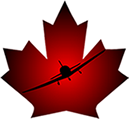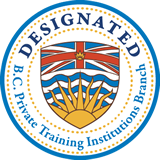 |
|
Centre of Gravity “The best and safest thing is to keep a balance in your life, acknowledge the great powers around us and in us. If you can do that, and live that way, you are really a wise man.” --Euripides (484 BC - 406 BC)--
Some time back I received a note from Evan. He wrote, “I remember reading at one time that Lindbergh loaded the Spirit of St. Louis with an excessive aft C of G for his trip across the Atlantic. I vaguely remember the reason was that the aircraft would have to be trimmed well forward to compensate and that this would derive more lift from the stabilizer in the rear giving more total lift and hence more efficiency. What's the reasoning behind this? Is it true?” I haven’t read the original document Evan writes about, but the reasoning seems sound to me. An aft centre of gravity certainly does give an aircraft an advantage in the area of endurance and fuel economy. It does, however, also result in some disadvantages. Like life, aircraft loading is a series of compromises. If we understand the trade-offs, we can make our decisions based on knowledge and understanding and load our aircraft to optimize for the characteristics most important on a particular flight. An aircraft is held aloft by the force of lift produced by the wings. For an aircraft to remain in level flight, lift produced by the wings must equal the machine’s weight. We refer to this condition as equilibrium. If lift exceeds weight, the aircraft will accelerate vertically upwards in proportion to the weight differential; if weight exceeds lift, the aircraft will accelerate vertically downwards also in proportion to the differential. The average of the lift force produced by the wing or airfoil acts through the point we refer to as the centre of pressure and at right angles to the wing’s chord line. Weight acts through the point we refer to as the centre of gravity and in a direct line from the centre of gravity to the centre of the earth regardless of the aircraft’s attitude. A design feature of most aircraft is to position the centre of pressure during normal flight conditions aft of the centre of gravity creating a dynamic tension or torque between the two forces of lift and weight. This ensures the aircraft will have a designed-in tendency to put its nose down in the event lift is lost or significantly reduced, for example, in a stall. This is a useful and life-preserving tendency, one we don’t want to give up lightly. We achieve stability in aircraft not through equal, directly opposed forces, but through the balance of eccentric forces, forces that are intentionally designed to act in dynamic tension. To balance two, opposing, eccentric forces a third force is needed. In this case, we depend on the force produced by the horizontal stabilizer or stabilator to balance the torque resulting from off-setting the forces of lift and weight. The horizontal stabilizer, normally found at the tail of an aircraft, is an airfoil much like the wing except it produces negative lift, lift directed downward under normal flight conditions rather than upward. Its work is to push the tail section of the aircraft downward to counteract the tendency of the wing to lift the tail up and over the centre of gravity. Quite simple yet quite elegant. When teaching this concept, I find many students can make good use of the image of a mobile. Imagine a stick suspended by a string. We’ll think of that string as the force resulting from lift: its pull is upward. A weight is suspended from the stick just to one side of the attachment point of the string: its pull is downward. We can think of this weight as the centre of gravity. At some distance on the other side of the string’s attach point a much smaller weight is suspended to counterbalance the tendency of the first weight to pull the stick out of horizontal. We can imagine this weight as the tail-force working to keep the stick level. Or, we might imagine a teeter-totter. An adult can successfully teeter-totter with a young child simply by sitting close to the balance point. Remember that force is equal to mass multiplied by distance (F = m x d). What we must achieve, if we are to successfully fly an aircraft in level flight, is a working balance among the three forces of lift, weight, and tail force so the aircraft can remain in a level attitude. Now we come to the question of moving the centre of gravity forward or aft within the limits established and published by the aircraft manufacturer. The centre of pressure essentially remains stationary while the wing is in a normal flight attitude. The farther forward we move the centre of gravity the more we increase the aircraft’s tendency to put its nose down. To keep the aircraft in a level flying attitude, it becomes necessary to increase the amount of down-force the stabilizer or stabilator produces. Normally we do this by trimming or adjusting the angle at which the airfoil meets the relative air flow. We do, however, produce some measurable changes in the aircraft’s performance characteristics as we move the centre of gravity forward and make the necessary adjustments to compensate for the change. The increased down-force required from the tail section to maintain longitudinal balance acts on the aircraft as increased weight. Effectively, as the centre of gravity is moved forward, the aircraft becomes heavier. A heavier aircraft experiences increased wing loading and requires additional lift to maintain level flight. To produce additional lift, we must increase our angle of attack. An increase in angle of attack reduces our margin from the critical angle of attack—the stall—and, thus, increases our stall speed. It also produces additional induced drag. Additional drag requires additional thrust. Additional thrust means increased fuel burn. An excessive forward centre of gravity might reduce elevator control authority that is required to lift the nose at low airspeed, for example, on take-off or landing. There is some good news, however. An aircraft with a more forward centre of gravity is a more stable aircraft. It will be much quicker to recover from a stall or the condition of approaching stall and, being heavier, will have a higher manoeuvring speed. It will be more stable in turbulent conditions. The other side of the story is essentially the reverse. An aircraft with a more aft centre of gravity will require less down tail-force to balance the decreased distance—reduced torque—between the centre of gravity and the centre of pressure. It will have a lower stall speed due to its reduced weight, angle of attack, and wing loading. Endurance will increase because induced drag is reduced. The thrust required to produce a given airspeed will be less than for the same aircraft in a heavier configuration. The negative side of the equation, in extreme situations, is that, should the aircraft stall, it may become extremely difficult or impossible to affect recovery. The nose will not come down: an entirely unsatisfactory condition. So, Lindbergh was certainly on the right track by loading his aircraft with a rear centre of gravity. For him, the critical factor was to ensure maximum range with available fuel. The North Atlantic Ocean would certainly be a poor landing site for a small aircraft. By loading the Spirit of St. Lewis with a rearward centre of gravity, Lindbergh would have established a situation to maximize his range. His aircraft would be able to fly with the least possible angle of attack (minimum induced drag), the lowest possible wing loading and down tail-force (minimum weight), and would require the least amount of thrust (power) for a given airspeed. Knowing how to correctly load your aircraft for a particular flight can enable you, too, to maximize its performance for a particular flight. If you are anticipating turbulence, perhaps during a trip through the local mountains, or, if you intend to practice spins and other aerial manoeuvres, a more forward centre of gravity loading would be the preferred choice. If you require maximum range and power efficiency and do not intend to do any complex manoeuvring or if you expect reasonably calm conditions, a more aft centre of gravity would be a better fit. Understanding how the forces at work on your aircraft in flight can enable you to make positive, informed decision on how to maximize its performance for the conditions you intend to face. Of course, we must always ensure that whatever variation on our loading we choose, we take off with the centre of gravity within the published limits for the aircraft.
|


